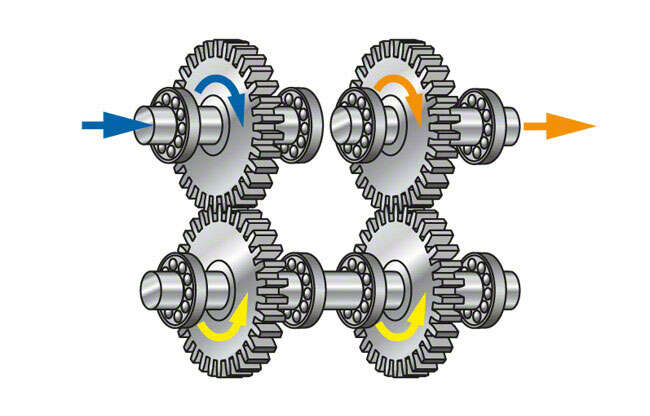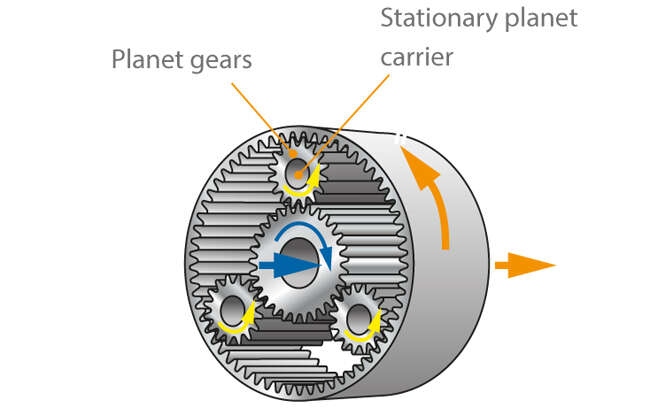Gear drive
Gear drives are ideal for achieving an optimal type of pump (in terms of design effort and operating data) where higher power is involved. In this context, the rotational speed of the pump must be selected independently of the rotational speed of the drive.
Depending on the transmission ratio required, either a single-stage or multi-stage type of gear unit can be used. See Figs. 1 and 2 Gear drive

Fig. 1 Gear drive: Single-stage gear drive, direction of rotation is reversed

Fig. 2 Gear drive: Two-stage gear drive, direction of rotation remains the same
If the pump's impellers (or the individual impeller) are attached directly to the gear drive output shaft, the latter and the driven machine form a compact set as with the close-coupled pump and geared pump.
If high transmission ratios are required with the driven and the drive machines in a line, it is advisable to use planetary gear units, see Fig. 3 Gear drive, and star gears, see Fig. 4 Gear drive, because the rotationally symmetrical casing geometry is ideal for turbomachinery as well as electric motors. The same applies to similarly high gear reduction ratios as with pumps for use in low-lift pumping stations.

Fig. 3 Gear drive: Planetary gear unit with stationary planet carrier, direction of rotation is reversed; transmission ratio i = 2 to 11 with three planet carriers

Fig. 4 Gear drive: Planetary gear unit with rotating planet carrier (star gears), direction of rotation remains the same; transmission ratio i = 3 to 12 with three planet carriers
In the case of high gear circumferential speeds, a high degree of production accuracy is required from the perspective of noise emissions (see noise in pumps and systems).
